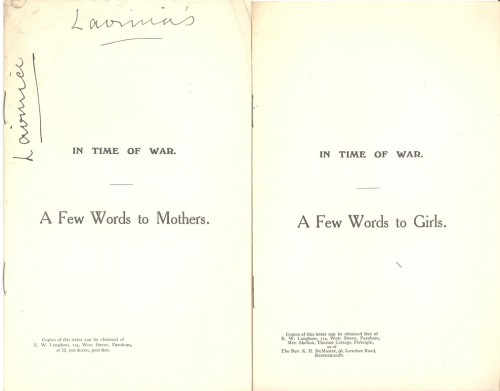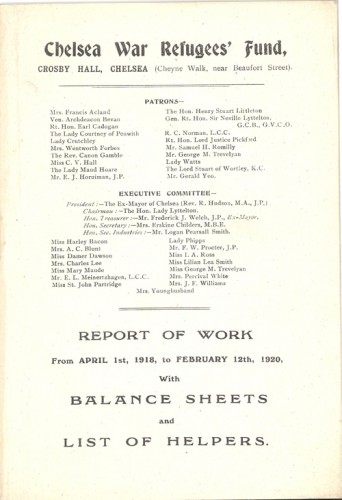'In Time of War: a few words to girls' and 'In Time of War: a few words to mothers', 1914.
Written by Lavinia Talbot these two booklets make suggestions on how to behave and how to help during the War. Ideas include keeping up with newspaper reports of the war and buying a map to follow along, learning how to cook economically and how to garden, and learning to speak French to help teach the Belgian refugee children. Excerpts include: 'Do not let a mischievous excitement and restlessness, caused by the neighbourhood of these large camps of men, hinder you from doing your best at home in serving your country bravely and nobly, helping in every way you can.'
Image Courtesy of Queen Mary University of London Archives.










